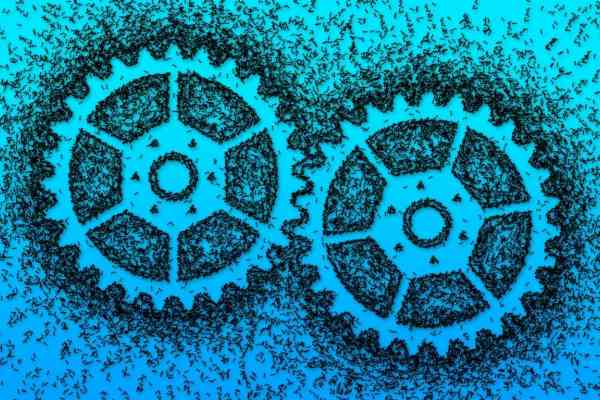October 28th, 2025 | 07:20 CET
Turnaround thanks to port business? Siemens, dynaCERT, Konecranes
The entire industrial sector must transition toward sustainability - and that includes logistics. The shipping industry, in particular, is seeing growing momentum. Global shipping currently accounts for around 3% of total emissions – and, as the Reuters news agency reports with reference to the International Maritime Organization (IMO), this share could rise to 5-8% by 2050 if no countermeasures are taken. Reason enough to take action. We highlight the different strategies being implemented and explain how the up-and-coming company dynaCERT could gain market share in this area.
time to read: 3 minutes
|
Author:
Nico Popp
ISIN:
SIEMENS AG NA O.N. | DE0007236101 , DYNACERT INC. | CA26780A1084 , KONECRANES OYJ O.N. | FI0009005870
Table of contents:

"[...] The VERRA certification adds credibility to dynaCERT's emission reduction technologies by demonstrating compliance with internationally recognized standards for carbon emissions reductions and sustainable development. [...]" Jim Payne, CEO, dynaCERT Inc.
Author
Nico Popp
At home in Southern Germany, the passionate stock exchange expert has been accompanying the capital markets for about twenty years. With a soft spot for smaller companies, he is constantly on the lookout for exciting investment stories.
Tag cloud
Shares cloud
Siemens and Maersk are making shipping greener
Making shipping more sustainable is the mission of many companies. The shipping company A.P. Moller-Maersk is focusing on green methanol and other alternative fuels in order to achieve climate neutrality by 2040. Siemens and its subsidiary Siemens Energy are also focusing on innovation. These include hybrid battery systems that are expected to reduce fuel consumption by up to 90%, smart grids in ports, charging infrastructure, and green hydrogen. All these measures are so comprehensive that they represent a major challenge for customers, particularly shipping companies and port operators, amid the current economic environment.
But it is clear that something has to change. There is regulatory pressure within the EU. With FuelEU Maritime and the Fit for 55 package, the EU legislator has introduced comprehensive regulations that will fundamentally transform shipping. For investors, these regulations mean both significant cost burdens for traditional shipping companies and considerable investment opportunities in clean technologies, alternative fuels, and port infrastructure. Specifically, the new regulatory framework provides for gradual reductions in emissions and severe penalties.
dynaCERT expands into the port business
The Canadian company dynaCERT recently announced its expansion into the maritime sector, and achieved its first success: in summer 2025, the Company equipped several port cranes at the French port of Rochefort with its HydraGEN™ technology. A pilot plant went into operation in July 2025, with the remaining installations following by September. Port Director Gérard Pons praised the technology in regional media and trade magazines, noting that it reduces the ecological footprint while cutting fuel costs, making the port more competitive. dynaCERT CEO Jim Payne commends Rochefort's commitment and sees a "*growing demand for proven technologies that *reduce emissions without having to replace existing engines."**
dynaCERT's patented HydraGEN™ system produces hydrogen and oxygen on demand and injects them into diesel-powered engines, significantly reducing CO₂, nitrogen oxide, and particulate emissions while improving fuel efficiency. In addition, the Company's HydraLytica™ platform enables real-time emissions monitoring, and in the future, customers will be able to generate CO₂ certificates through the system. For dynaCERT, the expansion into the port business represents a promising new growth avenue. As the ramp-up of hydrogen in European industry faces delays and many companies remain under cost pressure, a new market could emerge for transitional technologies such as those offered by dynaCERT. The successful project in Rochefort, France, demonstrates that HydraGEN™ is fully compatible with existing infrastructure and compliant under the current European regulatory framework.
Konecranes relies on hydrogen even for heavy loads
Although specialists such as the Finnish company Konecranes already offer low-emission cranes for ports and industrial operations, the transition to these new solutions will take time. The world market leader in lifting and material handling technology is currently focusing on hybrid cranes and plans to offer heavy-duty cranes powered by fuel cells in the medium term. Konecranes' Head of Marketing, Thomas Gylling, calls a new fuel cell carrier, to be introduced in 2025, a "breakthrough for heavy material handling." Hydrogen, he says, provides the performance and reliability that ports need. Konecranes expects to be able to offer all of its port products in fully electric versions by 2026. These developments show that Konecranes has a competitive advantage as a full-range supplier of low-emission port logistics.
Good opportunities for dynaCERT – COO gives insightful interview
Nevertheless, there will still be a market for transitional technologies for many years to come. dynaCERT benefits from the fact that its own technology has been tried and tested for many years – among other things, the Company has already equipped buses and heavy machinery in mining with HydraGEN™. In addition, dynaCERT's solution can be implemented quickly and is also comparatively inexpensive – new systems are significantly more expensive and often rely on energy sources such as hydrogen, which are not yet sufficiently available in Europe.
dynaCERT's share price is currently bottoming out. Anyone looking at the long-term value can see how the share price has developed. Expansion into the port sector could mark a turning point for the Company. It is now important that further orders follow the Rochefort order. Then the market could see turnaround potential in the share price. COO Kevin Unrath reveals dynaCERT's plans for the future in a recent IIF interview with Lyndsay Malchuk.
<iframe width= "800" height=" ´600" src=" https://www.youtube.com/embed/NHTAIQpX-6E" title=" The Unfiltered Conversation: dynaCERT's COO on Execution, Orders, and the Real Road to Profitability" frameborder=" 0" allow=" accelerometer; autoplay; clipboard-write; encrypted-media; gyroscope; picture-in-picture; web-share" referrerpolicy= "strict-origin-when-cross-origin" allowfullscreen></iframe>
Conflict of interest
Pursuant to §85 of the German Securities Trading Act (WpHG), we point out that Apaton Finance GmbH as well as partners, authors or employees of Apaton Finance GmbH (hereinafter referred to as "Relevant Persons") may hold shares or other financial instruments of the aforementioned companies in the future or may bet on rising or falling prices and thus a conflict of interest may arise in the future. The Relevant Persons reserve the right to buy or sell shares or other financial instruments of the Company at any time (hereinafter each a "Transaction"). Transactions may, under certain circumstances, influence the respective price of the shares or other financial instruments of the Company.
In addition, Apaton Finance GmbH is active in the context of the preparation and publication of the reporting in paid contractual relationships.
For this reason, there is a concrete conflict of interest.
The above information on existing conflicts of interest applies to all types and forms of publication used by Apaton Finance GmbH for publications on companies.
Risk notice
Apaton Finance GmbH offers editors, agencies and companies the opportunity to publish commentaries, interviews, summaries, news and the like on news.financial. These contents are exclusively for the information of the readers and do not represent any call to action or recommendations, neither explicitly nor implicitly they are to be understood as an assurance of possible price developments. The contents do not replace individual expert investment advice and do not constitute an offer to sell the discussed share(s) or other financial instruments, nor an invitation to buy or sell such.
The content is expressly not a financial analysis, but a journalistic or advertising text. Readers or users who make investment decisions or carry out transactions on the basis of the information provided here do so entirely at their own risk. No contractual relationship is established between Apaton Finance GmbH and its readers or the users of its offers, as our information only refers to the company and not to the investment decision of the reader or user.
The acquisition of financial instruments involves high risks, which can lead to the total loss of the invested capital. The information published by Apaton Finance GmbH and its authors is based on careful research. Nevertheless, no liability is assumed for financial losses or a content-related guarantee for the topicality, correctness, appropriateness and completeness of the content provided here. Please also note our Terms of use.




